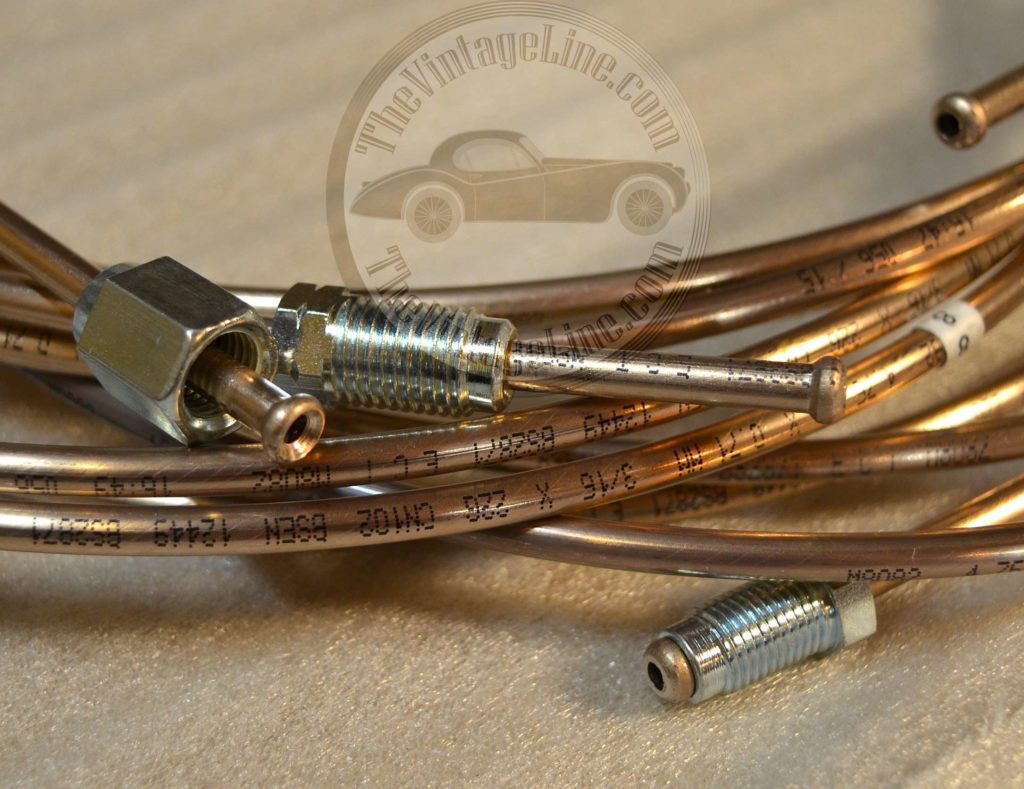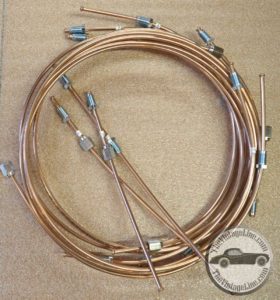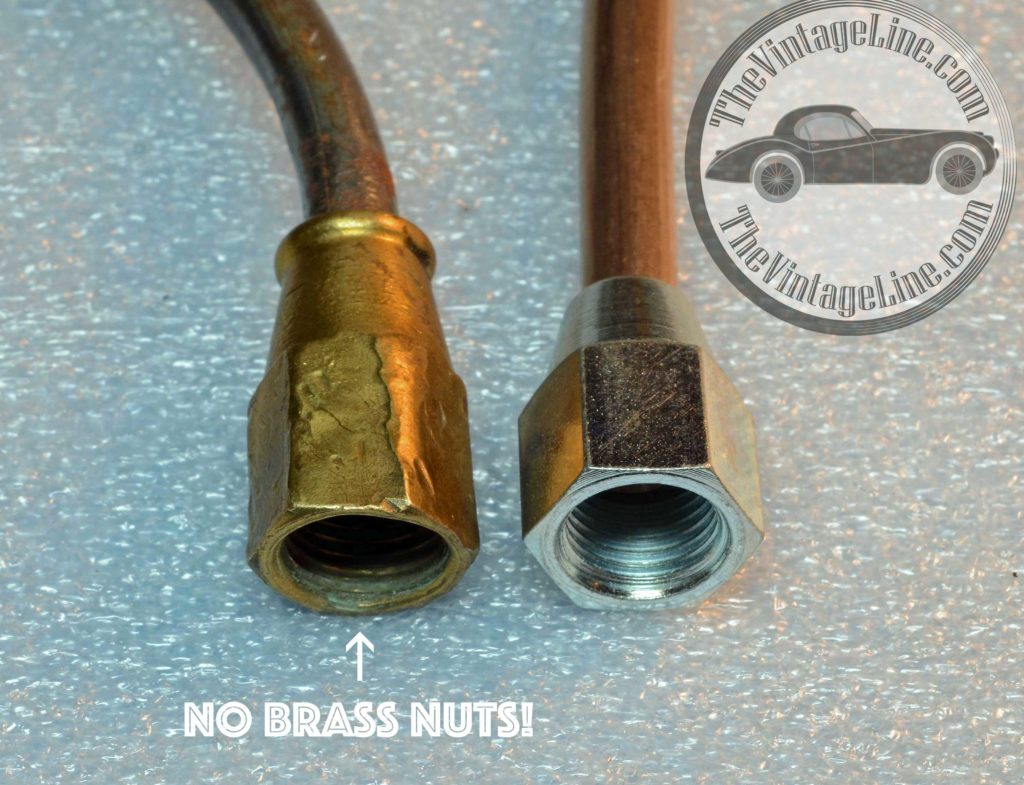Congratulations!
You are looking for the best brake lines for your vintage car!
I commend you for that! and I can tell you unequivocally that these are the best lines on the market for your classic car. I have extensive experience restoring vintage cars and it has been my passion for the better part of my life. In this time I have seen and installed just about every kind of brake line kit on the market and experienced every kind of problem with brake lines you could possibly imagine. This is the reason I have developed these brake line kits; to help you avoid some of the pitfalls I have experienced. This is why I always use the Cunifer type brake line when restoring vehicles. I assemble these line kits to be better than all other line kits: great price, longest lasting, easiest to install, easy to order, and perhaps best of all – easy to bend.

All of our brake line kits are made from British made Cunifer hydraulic tubing. This is real Cunifer line 90-10 ( 1% iron) copper nickel alloy line which is made in England and has a wall thickness of .028 inches and is the best hydraulic tubing money can buy: easy to form, no special bending tools required, resiliant to cracking, excellent flare sealing, minimal corrosion. Using just your hands and a little bit of patience you can produce beautifully formed brake lines. But be aware: Other manufactures of less expensive copper-nickel hydraulic line have cropped up recently with a significantly thinner wall thickness and some with significantly different alloy content. Some of these less expensive lines have wall thickness as low as .017 inches, which is below the requirement for hydraulic tubing in any material. The cheaper thinner wall tubing is actually more difficult to bend because it tends to kink. In addition to the thin wall line I have also inspected other copper alloy line recently made in India or China that can be picked up with a magnet! Please use real Cunifer line made in England.
Most other copper-nickel brake line kit you find for sale will have brass tube nuts. This may seem like a good idea at first but in practice brass nuts cause too many problems.
No brass nuts are used in my kits. Why? brass nuts round off the flats of the hex nut, tend to mushroom at the ends and eventually can crack. Their threads are also weak and can strip easily if over tightened. This is why plated steel nuts are used in all my line kits. If you are concerned about the steel nuts eventually rusting away don’t worry, the rest of your car will be rusted away before that time comes.
Stainless steel nuts and lines have a particularity pernicious problem known as crevasse corrosion: in very tight spaces, such as found between the nut and the tube, stainless steel can develop extremely low pinpoint PH spots which burrows holes into the line like a worm. This happens in salt conditions primarily. This is one reason the navy uses copper nickel line in their submarines instead of stainless.
Take a look at the video to see how easy it is to form this Cunifer line by hand .
Over the years I have developed many brake line kits for cars I have worked on and also collaborated with owners studying their original brake line sets. This is how these accurate brake line kits with the correct length lines and the correct end fittings are developed. In many other brake line kits on the market you will find that the lines are a little bit too long. This causes difficulty routing the lines. It is done so that you can always make the line work, and while it is true that it is better too long than too short, the installation ends up being a bit messy. For this reason we make our lines as close to original length as possible and do not copy other manufactures line kits. Every one of our line kits you see available has been developed from an original set of lines and also test fit to a vehicle.
You can search around and find pre-bent stainless steel brake line kits available (which are very expensive). I have installed these in the past but found them to be a bit of a hassle as the lines can be difficult or impossible to fit into an assembled car. Our lines can be snaked through an assembled car and nicely bent by hand in place. A lot easier, believe me.
Our brake line kits are supplied in loose coils as pictured below. You unfurl them and bend the lines to match your originals. All of the correct brake nuts are installed and the flares are preformed. Each line is clearly labeled indicating it’s position in the car. If you are missing your original lines you can use a piece of wire to mock up it’s routing in the car and then bend the line to match. Remember that bending Cunifer line is a joy and of all the kits we sell there are only a few that benefit from the use of bending tools.
In case you are still wondering why these brake line kits are the best here is another bonus! I include a scrap piece of line about a foot long for you to practice on in every complete line kit! (except the reservoir line kits) You can practice on this piece till you are comfortable with your skills (but do realize it will become more brittle as you bend it back and forth)
Please note that we do not sell individual lines, tubing coils or loose brake nuts.



